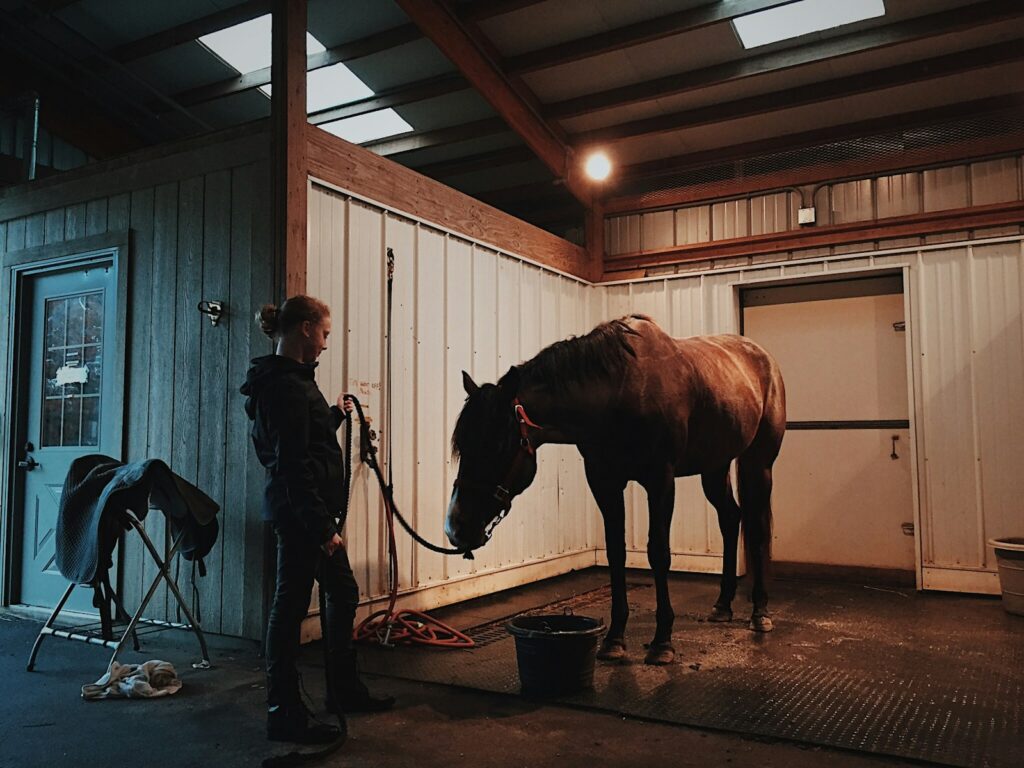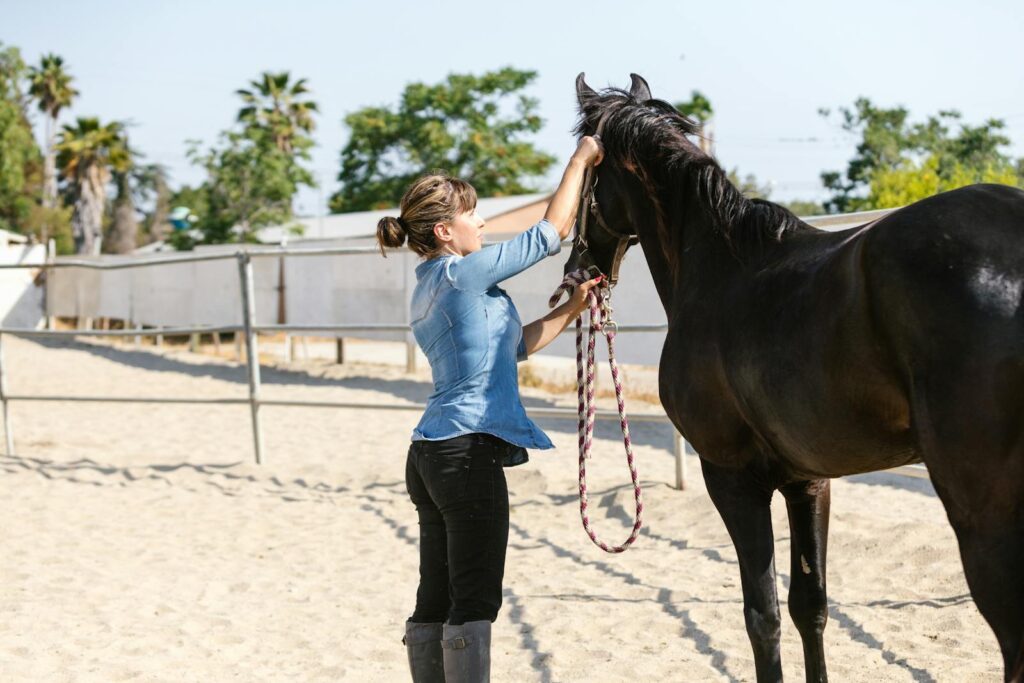Training a horse to work cattle effectively with minimal guidance represents one of the highest achievements in equine training. Known as “cow sense,” this ability combines a horse’s natural instincts with careful training to create a partnership where horse and rider move as one. When properly trained, these horses can anticipate cattle movements, position themselves correctly, and make split-second decisions that would be impossible for a rider to direct through conventional cues. This article explores the comprehensive process of developing a horse that can work cattle independently, requiring only subtle rider input to perform complex maneuvers.
Understanding Cow Sense in Horses

Cow sense refers to a horse’s natural ability to read, anticipate, and respond to cattle movements. Some horses, particularly those from bloodlines bred for cattle work, possess an innate understanding of how to track and control cattle movement. This natural ability varies significantly between individual horses and breeds, with Quarter Horses, Appaloosas, and certain Spanish-derived breeds often displaying strong herding instincts. A horse with good cow sense will lock onto a cow with its eyes, follow its movements, and position itself to block escape routes without explicit rider commands. Recognizing whether your horse has natural cow sense is crucial before beginning training, as it will determine your training approach and realistic expectations for the horse’s development.
Selecting the Right Horse for Cattle Work

Not all horses are suitable candidates for independent cattle work, regardless of training quality. When selecting a prospect, prioritize horses with quick reflexes, athletic ability, and mental sharpness. Observe the horse’s reaction when first exposed to cattle—those that show interest rather than fear or indifference typically have better potential. Bloodlines matter significantly in this discipline; horses from working cow horse, cutting, or ranch horse lineage often inherit the necessary instincts. Age is another consideration; while younger horses learn more readily, a mature horse with the right temperament can still develop into an excellent cattle horse. Remember that physical attributes like agility, stamina, and soundness are essential for the demanding movements required in cattle work.
Building the Essential Foundation

Before introducing cattle, your horse needs a solid foundation of basic training that will support more advanced work. Your horse should respond reliably to leg pressure, rein cues, and weight shifts, and demonstrate collection, flexibility, and lateral movement. Develop a responsive stop and backup, as these are critical for controlling position relative to cattle. Teach your horse to move its hindquarters and shoulders independently, which allows for precise positioning when working cattle. Practice transitions between gaits until they become smooth and immediate. This foundational training establishes the communication system you’ll use to refine and direct your horse’s natural instincts when working cattle, so invest significant time in perfecting these basics before moving to the next stage.
Introduction to Cattle: The First Encounters

A horse’s initial experiences with cattle significantly impact its future development, making methodical introduction essential. Begin with calm exposure, allowing your horse to observe cattle from a comfortable distance without pressure to interact. Gradually decrease this distance as your horse remains relaxed, always staying within its comfort zone. Once comfortable near cattle, practice walking parallel to the herd, then progressing to following single animals at a walk. Watch for signs of interest—ears forward, focused attention, lowered head—which indicate developing cow sense. These early sessions should be brief, positive, and low-pressure, focusing entirely on building confidence and curiosity rather than teaching specific maneuvers. Many experienced trainers recommend allowing the horse to watch experienced cattle horses work, as horses learn remarkably well through observation.
Developing Tracking Skills

Tracking forms the foundation of all cattle work and involves teaching your horse to follow a cow’s movements precisely. Start in a smaller enclosure with a single calm cow, allowing your horse to follow its movements naturally with minimal rider input. Use subtle leg cues only when necessary to maintain position behind the cow, ideally 10-15 feet back. Reward any attempt to follow the cow by releasing pressure and offering praise. As tracking improves, introduce gradual turns and changes of pace, allowing your horse to adjust position independently. The goal is for your horse to maintain the same relative position regardless of the cow’s movements, requiring only occasional guidance. This skill typically develops over several weeks of consistent practice, with sessions kept short (15-20 minutes) to maintain the horse’s interest and prevent frustration.
Teaching Rate and Position

Rate refers to a horse’s ability to match its speed precisely to that of the cattle, while position describes the optimal location relative to the cattle for effective control. Begin by practicing transitions while tracking a cow, teaching your horse to accelerate and decelerate in response to the cow’s movements rather than your commands. Use subtle seat and leg cues to refine positioning, teaching your horse to read the pressure applied by your body rather than relying on rein signals. Practice approaching the cow from different angles, rewarding your horse when it positions itself at the correct distance and angle to influence the cow’s movement. Gradually reduce your input until your horse begins adjusting its own rate and position in response to the cow’s behavior. This self-regulation becomes the foundation for independent cattle work and typically emerges after substantial tracking practice.
Introducing Turns and Stops

Once your horse tracks confidently, introduce more complex maneuvers beginning with basic turns and stops. Work with a single cow in a confined space, allowing your horse to follow as the cow changes direction. Initially, use subtle guidance with your legs and weight to help position your horse correctly for turns, gradually reducing these cues as your horse begins anticipating the cow’s movements. Practice stopping when the cow stops, teaching your horse to watch the cow rather than waiting for rider input. Introduce the concept of “blocking” by positioning your horse to prevent forward movement of the cow, rewarding any attempt to move into the correct blocking position. These exercises develop your horse’s understanding of how its body position influences cattle movement, a crucial concept for independent work.
Developing Reading and Anticipation

A truly skilled cattle horse doesn’t just react to cattle movement—it anticipates where the cow will go next and positions itself accordingly. To develop this ability, work with increasingly active cattle that change direction unpredictably. Minimize your guidance, allowing your horse to make mistakes and learn from them. Watch for moments when your horse begins to position itself before the cow moves, indicating developing anticipation skills. Use experienced cattle that respond predictably to pressure, as this helps your horse connect its actions with the cow’s responses. This stage often involves “lightbulb moments” where the horse suddenly understands the cause-and-effect relationship between its position and cattle movement. Patience is essential, as this cognitive development typically requires numerous sessions over several months.
Advanced Techniques for Minimal Input

As your horse’s independence grows, introduce more sophisticated work that requires minimal guidance. Practice cutting individual animals from a herd, initially providing guidance but gradually allowing your horse to identify and separate cattle on its own. Teach your horse to hold a line—maintaining position to prevent a cow from returning to the herd. Work on boxing, where your horse contains a cow in a specific area using independent positioning and movement. Introduce the concept of driving multiple cattle in a specific direction, using increasingly subtle cues to indicate your desired outcome rather than micromanaging the process. Throughout these advanced exercises, consciously reduce your input, rewarding your horse for making correct decisions independently and providing guidance only when necessary for correction or redirection.
Refining Communication to Minimal Cues

The ultimate goal is a horse that works cattle effectively with nearly imperceptible rider input. Begin systematically reducing the intensity of your cues, transitioning from obvious leg pressure to light touches, and eventually to mere weight shifts. Replace direct rein guidance with neck reining and subtle hand positions. Develop a communication system where your focus direction becomes a cue, teaching your horse to look and move toward where you’re looking rather than requiring physical signals. Practice using seat pressure rather than leg cues to indicate speed changes, and experiment with voice commands for specific actions. This refinement process requires consistent reinforcement and clear timing of rewards, gradually establishing a partnership where communication becomes almost telepathic in its subtlety.
Practical Application in Real Working Situations

Controlled training environments differ significantly from real-world ranch work, necessitating practical application of developed skills. Begin with simple tasks like moving small groups of cattle between pastures, allowing your horse to make decisions while providing minimal guidance. Progress to more complex scenarios like sorting cattle, separating pairs, or working in varied terrain that requires independent navigation while tracking cattle. Gradually increase the pressure and pace of work, exposing your horse to the realities of ranch situations where quick decisions are essential. Provide opportunities to work alongside experienced cattle horses in authentic settings, allowing your horse to learn through both observation and practical experience. These real-world applications solidify training and develop the confidence necessary for truly independent work.
Troubleshooting Common Issues

Even well-trained horses encounter challenges when developing independent cattle working skills. Overexcitement is common, with horses becoming too aggressive or rushing cattle; address this by returning to slower work focusing on rate control and calm approaches. Conversely, some horses display hesitancy or fear around assertive cattle; build confidence gradually using calm cattle before reintroducing more challenging animals. Watch for signs that your horse is becoming dependent on your cues rather than developing independence, which often manifests as constant checking or waiting for guidance; deliberately reduce input to force more independent decision-making. Inconsistent performance typically indicates gaps in foundation training or confusion about expectations; return to basics to identify and address these gaps. Remember that development isn’t linear—progress often includes plateaus and occasional regression requiring patience and consistent reinforcement.
Maintaining and Advancing Skills

Once your horse demonstrates reliable independent cattle working abilities, focus shifts to maintenance and continuous improvement. Establish a consistent practice schedule that includes regular cattle exposure, as these skills diminish without regular application. Alternate between reinforcing basics and introducing new challenges to keep your horse engaged and learning. Experiment with increasingly complex scenarios involving multiple cattle, varied terrain, and different working objectives. Consider participating in competitive events like ranch versatility, team penning, or cutting, which provide structured opportunities to test and refine your horse’s abilities. Periodically video your sessions to objectively evaluate your horse’s performance and your own input, identifying areas for improvement. Remember that developing a truly exceptional cattle horse is a multi-year process requiring commitment to ongoing education for both horse and rider.
Conclusion

Training a horse to work cattle with minimal rider input represents the pinnacle of the partnership between horse and human. By systematically developing your horse’s natural instincts, creating clear communication channels, and gradually transferring decision-making responsibility, you create a working relationship built on mutual trust and shared purpose. The result is not merely a trained animal but a thinking partner capable of complex assessment and independent action. While developing these skills requires significant time and patience, the reward is a horse that performs with seemingly effortless precision, anticipating both cattle movements and rider intentions to create a seamless working unit that exemplifies the true potential of the horse-human relationship.







